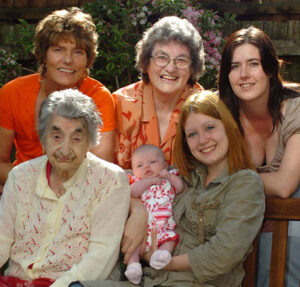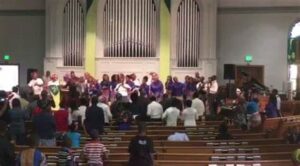Preaching To Include The Generations
Preaching to Include the Generations
In this post we are going to explore preaching to include the generations that make up your church.
 I recently reviewed the demographics of the church where I am serving as an Interim, or Transitional pastor. The church is in Michigan in the United States, and has been around a long time-147 years. The congregation is similar to many in the US, where church attendance has been on the decline. There is a large group of elderly people, aged 60 and above. There is also a significant number of families, with children that range from very young to teenager. A concern expressed by many is that younger families have left during the Covid pandemic, and the younger families also express concern that the worship and preaching is geared toward the older generation. This reality got me to thinking about preaching to include the generations represented in the congregation — all of them. Let’s think about this together over the next few posts.
I recently reviewed the demographics of the church where I am serving as an Interim, or Transitional pastor. The church is in Michigan in the United States, and has been around a long time-147 years. The congregation is similar to many in the US, where church attendance has been on the decline. There is a large group of elderly people, aged 60 and above. There is also a significant number of families, with children that range from very young to teenager. A concern expressed by many is that younger families have left during the Covid pandemic, and the younger families also express concern that the worship and preaching is geared toward the older generation. This reality got me to thinking about preaching to include the generations represented in the congregation — all of them. Let’s think about this together over the next few posts.
Learning About the Generations

Darrel Hall
I am deeply indebted to Darrell E. Hall for defining the task of preaching to include all generations in the church. His book, Speaking Across Generations, gives some wonderful reflections in this regard.
Hall faced a challenge in his early 30’s. He went from Youth Pastor, to the Pastor of a large church in which he identified 5 different generations: Boomers, Xers, Millennials, Gen Z and Beyond.
At first he tried to relate to all the generations by changing his clothing. One Sunday he would wear dress shoes with a cassock. The next he would wear a t-shirt and jeans.
 He continued that rather frantic wardrobe dance for seven years. As he got to know his congregation better, though, he realized that what he wore wasn’t nearly as important as he thought. In fact, he realized that many of the things that he thought were important weren’t. People didn’t care much about his dress. And the style of the facility didn’t put them off, either. How did he learn this? He decided to ask the generations. He formed focus groups made up of the various generations, and learned that there were values for his preaching that spread across all the generations.
He continued that rather frantic wardrobe dance for seven years. As he got to know his congregation better, though, he realized that what he wore wasn’t nearly as important as he thought. In fact, he realized that many of the things that he thought were important weren’t. People didn’t care much about his dress. And the style of the facility didn’t put them off, either. How did he learn this? He decided to ask the generations. He formed focus groups made up of the various generations, and learned that there were values for his preaching that spread across all the generations.
What Kind of Preaching Reaches the Generations?
This is how Hall puts what he learned:
After conducting the focus groups, the characteristics of an effective intergenerational preacher became clear: one who is characterized by Bible-based content, aha moments, no emotionalism or manipulation, simplicity, and teaching. (pp. 7-8)
What does this mean for preaching?
- People want to hear the Bible, not just the pastor’s thoughts.
- People want an “aha” moment, or a moment when all of a sudden a truth becomes more clear to them.
- The generations don’t want to be manipulated by emotionalism.
- Teaching should be simple, easy to understand.
- Intergenerational preaching should have a teaching component to it. In other words, it should lead people to understand a truth more deeply.
Learning to Preach to the Generations In Your Church
It should be noted that the congregation that Hall preaches to is a campus church. In other words, it has many university students and professors in its membership.

Worship At My Church
I took these first truths from Hall’s book and applied them to the church I am presently serving. I learned from leadership that worship and preaching had become controversial. This congregation would likely agree with all 5 of the things listed above. However, there was one area where I differed with Hall’s description. People here desired more passion in preaching. Certainly, they didn’t want to be manipulated by emotionalism, but they did want emotion in preaching. I reflected on this more in this post some time ago in this blog.
So, who are the generations in your congregation? What do they want? Why not ask them? We’ll look at this more in the next post.
Here is another reflection on this subject.



